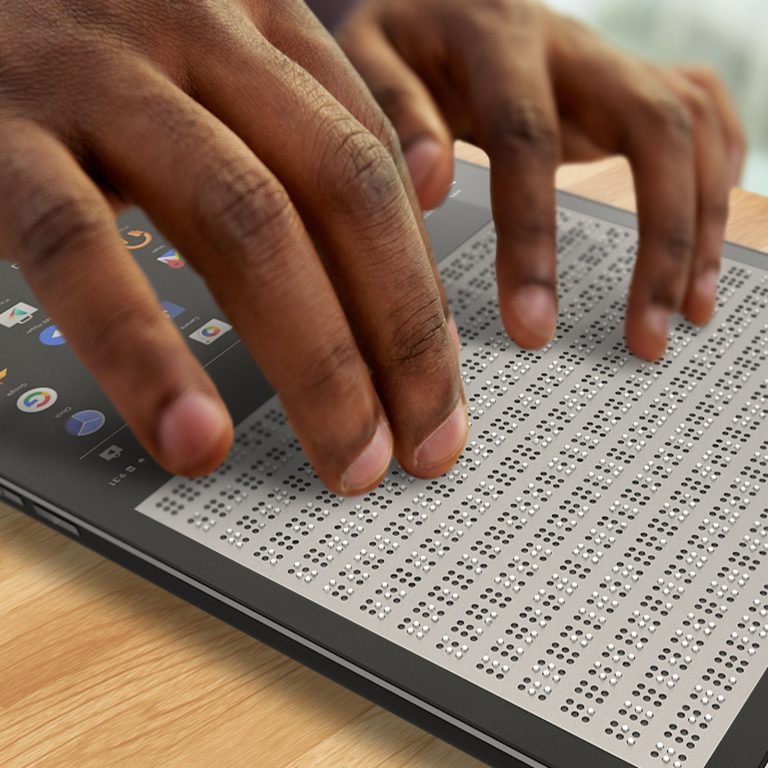Latest news about Bitcoin and all cryptocurrencies. Your daily crypto news habit.

Last week a fundraiser was started in order to get Satoshi Nakamoto’s original bitcoin white paper written in Braille for blind people. Thanks to the generosity of many bitcoin proponents, the project’s funding was successfully completed, and the paper will soon be made available to the general public.
Also read: UK’s Tickmill Adds Bitcoin to its Forex Platform
Currently, there is an initiative in the works to transcribe Satoshi’s white paper in Braille, a tactile writing system used by individuals who are visually impaired. The creator of the project explains that Satoshi’s paper has been translated into multiple languages, but has yet to be transcribed in Braille. The Bitcoin white paper Braille project is working with the American Printing House for the Blind, in order to press, bound, and distribute the copies to anyone who is visually impaired for free.
“Most of the cost of printing is related to the creation of tactile graphics representing the various technical diagrams that appear throughout the white paper,” explains Adam Newbold, the creator of the white paper Braille project.
Blind people read with Braille. Audio is nice, and many blind and visually impaired individuals enjoy using audio to consume information, but it’s not a complete substitute for actual text that can be read. If someone (sighted or not) wants to be able to read the white paper, they shouldn’t have to settle for an audio version in lieu of real text.
Bitcoin and the Blind: ‘The Biggest Barriers Are Accessibility’
Following the completion of the Braille project’s fundraiser, news.Bitcoin.com spoke with Craig McGee, a blind bitcoin proponent from the UK who also casually mines BTC from home. However, it’s not easy being a visually impaired bitcoiner as there are a lot of accessibility issues with wallets and software which makes it difficult for blind people. Mr. McGee has been 100 percent blind his whole life (he has a genetic disorder that affects his eyes called Norrie’s disease).
“The biggest barriers for the blind are accessibility,” Mr. McGee tells news.Bitcoin.com. “Most of the wallets are difficult to use, and the QT client interface doesn’t work too well with a screen reader.
So I have to do most things with the debug console, and I have to use the ‘help’ command to remind me of some of the commands. Some wallets are even worse as the menus are not read out by the reader so I can’t get them to debug.
The Tools and Methods Mr. McGee Uses to Send a Bitcoin Transaction
Mr. McGee explains user difficulty for the blind really depends on the wallet. Currently, he utilizes the Blockchain wallet which works reasonably well for him but some features, like sending to multiple addresses, the button is not read out loud by the screen reader platform.
“So I go to the wallet and press enter or space using the send transaction button,” Mr. McGee details, describing how he sends a bitcoin transaction from a wallet. “Then the dialogue box will open, and I press “e” to get to the edit box, put in the address and press tab to the next box to insert the amount, and finally hit tab to continue.
With a desktop client I’d either use the debug console — Get the command from the ‘help’ tab to send a transaction so I can insert the address and amount into the command line — I also use a notepad and copy & paste the data back into debug. Or if the file or settings menu has a send option I go there and see if it’s useable.
Mining Software is More Accessible and Easier to Use
As far as the Bitcoin white paper being written in Braille, Mr. McGee thinks it’s an interesting idea for knowledge for those not using the internet. But he personally likes to read things online using a .txt or .doc file format and just get the screen reader to read it out loud. “But it’s a good idea to bring the knowledge of bitcoin offline too,” Mr. McGee emphasizes.
 Mr. McGee says there are a bunch of options out there for the blind to help with accessibility such as the free screen reading program NVDA.
Mr. McGee says there are a bunch of options out there for the blind to help with accessibility such as the free screen reading program NVDA.
When Mr. McGee is mining at home he says Bitmain’s Antminer software is very accessible for the blind and “easy to use.”
“I just input my pool information into the boxes and let it mine to whatever pool I want,” explains Mr. McGee, describing his home mining operation. “It depends on the pool if the website is accessible. There’s a lot of variants, but in an ideal situation I’d set it up to the pool, then go to the pool, find how to tether the payout to my wallet address and have funds sent there. It’s all about web interfaces and websites being screen-reader friendly.”
Mr. McGee Doesn’t Believe Developers Think About Disabled Bitcoin Users
Mr. McGee says it’s hard for him to predict what the price will be but he hopes bitcoin’s value will continue to rise. However, Mr. McGee notes that he doesn’t hold much hope for bitcoin or altcoins to become more accessible to the blind.
“I fear developers just don’t think about accessibility for disabled people 99 percent of the time, and that won’t change,” he adds.
What do you think about bitcoin accessibility for the blind? Do you think there are ways that software developers could make it easier for disabled people? What do you think about the white paper written in Braille? Let us know in the comments below.
Images via Pixabay, the White Paper Braille project, and Craig McGee.
News.Bitcoin.com opinions and editorials are vital reading. Experience more of them here. At Bitcoin.com there’s a bunch of free helpful services. For instance, have you seen our Tools page? You can even lookup the exchange rate for a transaction in the past. Or calculate the value of your current holdings. Or create a paper wallet. And much more.
The post Bitcoin Accessibility From a Blind Person’s Perspective appeared first on Bitcoin News.
Disclaimer
The views and opinions expressed in this article are solely those of the authors and do not reflect the views of Bitcoin Insider. Every investment and trading move involves risk - this is especially true for cryptocurrencies given their volatility. We strongly advise our readers to conduct their own research when making a decision.

